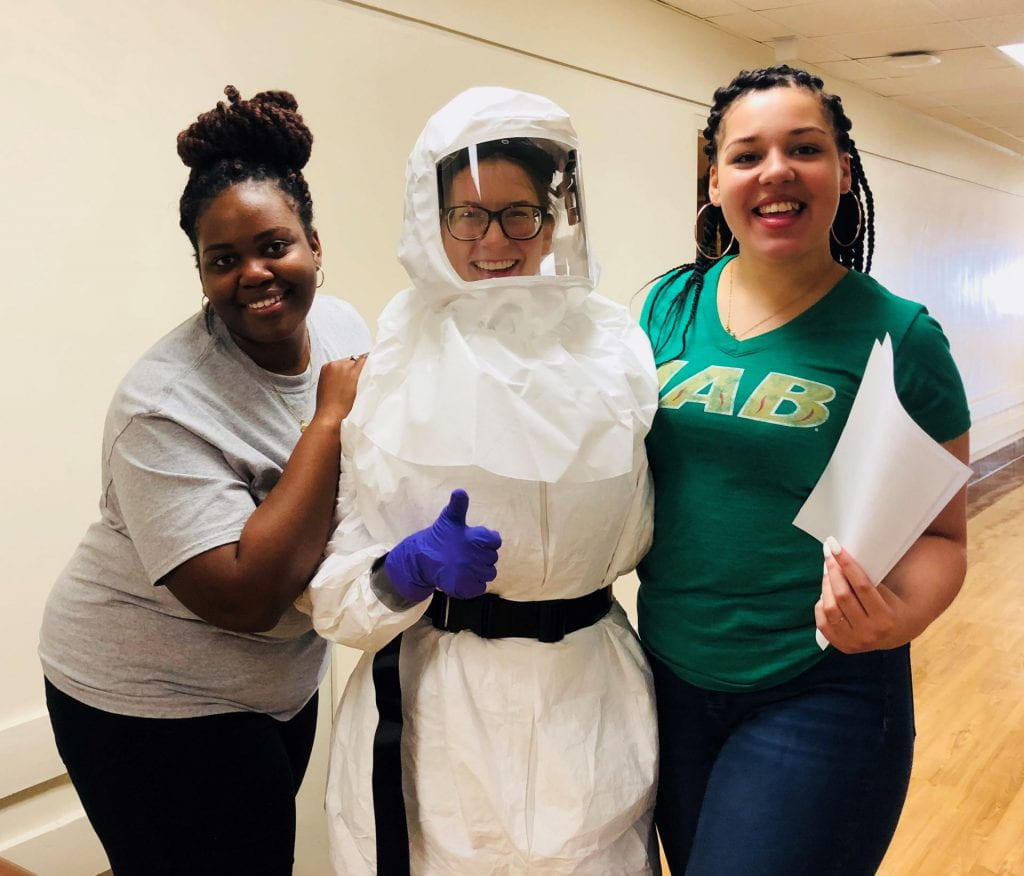What is public health without preparation and prevention? We don’t know either, and we aren’t sure that we want to find out! People like Jason Smith and Heath Williams, who work for Mississippi’s Center for Emergency Services at the University of Mississippi Medical Center (UMMC), use their years of nursing and emergency medical technician (EMT) expertise to conduct training sessions to make sure that both pre-hospital and hospital staff and responders across Mississippi are properly trained to care for patients with infectious diseases, such as Ebola.
While at the UMMC Infectious Disease Special Care Unit, we participated in an Operations Level Biosafety training where we were able to learn about the types of personal protective equipment (PPE) that health care professionals must wear when they are caring for a patient who may be infectious. During this training, we were instructed by Smith and Williams on how to work as a team to navigate the checklists and properly execute each step when donning (putting on) and doffing (taking off) PPE (which includes protective clothing and respiratory protection). This training is vital to not only ensuring the patient’s safety, but that of responder and hospital personnel. However, this is no easy process. From donning the many layers of protective clothing and gloves to wearing a powered air-purifying respirator hood, we realized it is not how it looks on TV! This is far from looking like McSteamy from Grey’s Anatomy. However, there is no way around it. Any shortcut could lead to contamination and increased risk for contracting Ebola.
MED-COM: Expecting the unexpected.
When you walk into the MED-COM center at UMMC, Mississippi’s state-of-the-art emergency response communications center, you feel as if you are entering the Starship Enterprise. There are multiple screens so that the dispatchers can constantly monitor weather, traffic, helipad locations, and ER to ER emergency transfers. In mass casualty events MED-COM staff can help figure out which hospitals have the resources to accommodate multiple patients. Also, due to the training and previous experience of the MED-COM dispatchers, they are able to assist paramedics in anticipating and meeting the needs of their patients. This leads to improved response times, improved transport times, and ultimately, improved patient outcomes.
From this visit, we learned exactly how much collaboration occurs between the various agencies and regional hospitals throughout Mississippi. When different health care and responder organizations are able to effectively communicate with one another, they are better able to coordinate resources and execute response operations across the state, potentially saving many more lives. Being prepared in the event of infectious diseases, mass casualties, and natural disasters is the best way to ensure that patients are able to receive the quality of care they need during those events. This visit gave us a glimpse of the type of coordination and activities that need to occur so that you and I have access to trauma care if/when we need it. It also showed us how important it is for communities to have the infrastructure necessary to facilitate effective response operations to large scale events.
Team #3 – Alyse, Danielle, & Deanna





